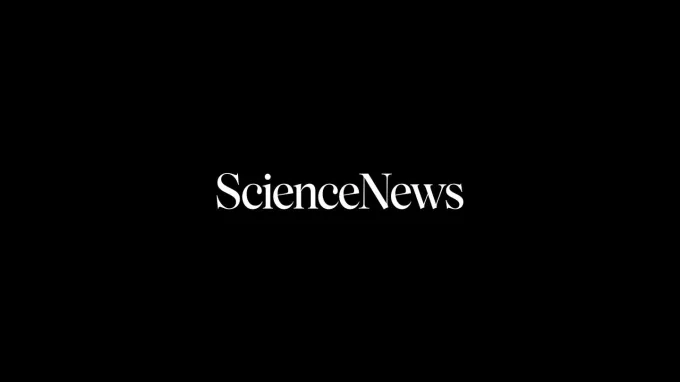Science News Magazine: Current Issue
Vol. 177 No. #10
Trustworthy journalism comes at a price.
Scientists and journalists share a core belief in questioning, observing and verifying to reach the truth. Science News reports on crucial research and discovery across science disciplines. We need your financial support to make it happen – every contribution makes a difference.
More Stories from the May 8, 2010 issue
-
 Life
LifeInsulin-producing cells can regenerate in diabetic mice
Animal study finds that the pancreas can spontaneously regenerate beta cells.
-
 Life
LifeScientists name large but elusive lizard
Though locals knew of it, the 2-meter cousin to Komodo dragons had escaped scientific description.
By Susan Milius -
 Life
LifeEating seaweed may have conferred special digestive powers
Gut microbes in Japanese people may have borrowed genes for breaking down nori from marine bacteria.
By Susan Milius -
 Health & Medicine
Health & MedicineLung function still impaired by dust from World Trade Center
Firefighters and emergency medical teams continue to have breathing problems years after the 2001 terrorist attack.
By Nathan Seppa -
 Anthropology
AnthropologyPartial skeletons may represent new hominid
Partial skeletons may represent a new hominid species with implications for Homo origins, one researcher claims. But many of his peers disagree.
By Bruce Bower -
 Life
LifeFruit flies turn on autopilot
High-speed video reveals the aerodynamics behind the insects’ maneuverability.
-
 Space
SpaceNewfound neighbor to solar system is a cool slacker
Researchers have found the closest brown dwarf to Earth and the coolest yet seen, raising the possibility that the nearest starlike body to the solar system may be a brown dwarf rather than a star.
By Ron Cowen -
 Life
LifeBriny deep basin may be home to animals thriving without oxygen
Creatures living deep in the Mediterranean without oxygen would be a remarkable first, biologists say.
By Susan Milius -
 Physics
PhysicsColliding dust grains charge each other up
Physicists propose a way that cloud particles can electrify themselves.
-
 Health & Medicine
Health & MedicineMapping the fruit fly brain
A new digital atlas could reveal how 100,000 neurons work together.
-
 Space
SpaceBackward planets may have flipped into place
Reversed orbits among ‘hot Jupiters’ decreases chance of Earthlike neighbors.
-
 Materials Science
Materials SciencePhysicists untangle the geometry of rope
Equations explain why winding fibers together does the job, no matter what they’re made of.
-
 Health & Medicine
Health & MedicineEmbryo transfer technique could prevent maternally inherited diseases
A new technique transplants healthy nuclear DNA of cells carrying mutated mitochondria.
-
 Space
SpaceFamous Martian meteorite younger than thought
The famous fragment of Mars, once proposed to hold signs of extraterrestrial life, is still pretty old. But the rock appears to have formed about 400 million years later than earlier analyses indicated.
-
 Space
SpaceNot your grandfather’s space program
President Obama offers a new plan that would send humans to orbit Mars during the mid-2030s.
By Ron Cowen -
 Anthropology
AnthropologyFor ancient hominids, thumbs up on precision grip
An analysis of a 6-million-year-old bone indicates that a humanlike grasp evolved among some of the earliest hominids.
By Bruce Bower -
 Anthropology
AnthropologyHobbit debate goes out on some limbs
A new analysis of fossil hobbits’ limb bones links them to much earlier hominids, and immediately attracts criticism.
By Bruce Bower -
 Anthropology
AnthropologyLice hang ancient date on first clothes
Genetic analysis puts garment origin at 190,000 years ago.
By Bruce Bower -

Science Past from the issue of May 7, 1960
WHISTLING SWANS DYED TO STUDY MIGRATION ROUTE — The U.S. Fish and Wildlife Service has been dyeing whistling swans vivid colors to learn more about their migratory movements. With their wings, tails or other body parts colored blue, yellow, green or red, the swans are easier to observe both when flying and resting on the ground. […]
By Science News -
 Physics
PhysicsLaser pioneer reflects on making Einstein’s idea real
Science News reporter Ron Cowen's Q&A with Nobel laureate and laser-technology pioneer Charles Townes.
By Ron Cowen -
 Physics
PhysicsInventing the Light Fantastic
The history of the laser: An idea that began with Albert Einstein inspired a race to create a special beam of light that has since infiltrated numerous aspects of everyday life.
By Ron Cowen -
 Physics
PhysicsLasing Beyond Light
Laser physicists have set their sights on new types of waves — manufacturing beams of sound, creating plasma swells and looking for ripples in spacetime.
-

-

-

Science Future for May 8, 2010
May 12 Students can visit scientists or conduct their own experiments to celebrate National Lab Day. Find local events at www.nationallabday.org May 27 – 30 The Association for Psychological Science hosts its annual meeting in Boston. See www.psychologicalscience.org June 4 – 8 The American Society of Clinical Oncology meets in Chicago. See www.asco.org
By Science News
